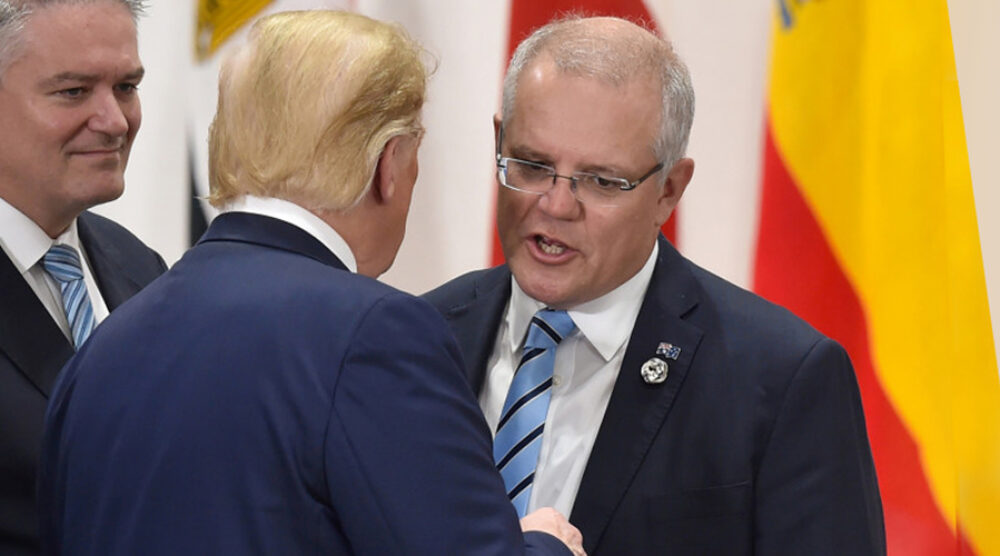The 2017 Australian Foreign Policy White Paper defined Australia as a “regional power with global interests.” Ambitious in nature, this white paper reflected the nation’s contemporary aspirations for active engagement across key spheres—diplomatic, defense, trade and cultural—within its neighboring region the Indo-Pacific, and more broadly on the world stage.
Consequential shifts of the past few years, including the impacts of great power strategic rivalry, China’s rising influence in the region, and the devastating impact of COVID-19, have put pressure on the nation’s foreign policy ambitions. Apart from its devastating health and economic impacts, COVID-19 has reinvigorated old anxieties and brought new forms of policy myopia to the fore. The demands on Australian diplomacy have shifted.
As a nation that does not have the capacity to “buy or bully its way in the world” there continues to be much at stake for Australia in promoting its interests and values through the available diplomatic channels and interactions. Australia’s chief diplomat, Frances Adamson, advocates a form of “constructive diplomacy” as the means by which Australia should navigate the strategic dynamics of contest and competition in the Indo-Pacific.
Adamson’s constructive diplomacy emphasizes Australia’s regional focus on the Indo-Pacific. Reflecting Australia’s aspirations to “shape outcomes that matter to our country’s and our region’s future,” her view of constructive engagement underpins the notion of normative soft power. It builds on the idea of “constructive realism,” a term used by former Prime Minister Kevin Rudd to describe the need to be “constructive where it’s difficult but nonetheless doable to work together on common challenges, as well as constructive in those areas where we should be working together as a matter of course.”
Homing in on the importance of managing differences, there’s no question that China may be a primary subject of constructive diplomacy. As Adamson states, “What is important is that channels of communication be kept open. That differences are handled carefully and respectfully while focusing on positive fundamentals and future opportunities.”
Over the past five years, Australia’s bilateral relationship with the global powerhouse has deteriorated sharply, a trend that some suggest is likely to continue for the foreseeable future. Australia’s vocal stances on a range of issues from foreign interference to the origins of COVID-19 have been met with the ire of China’s wolf warrior diplomats and accompanied by a suite of targeted economic punishments.
There is limited scope for “constructive diplomacy” in a bilateral relationship where the official channels of communication are frozen, and where policy on both sides is reduced to a series of opinions and sound bites amplified by social media on an issue-by-issue basis.
However, the reality is that China will continue to be an important regional actor and critical trading partner in Australia’s future. How Australia rebuilds and sustains engagement with China for the long term will be the marker of its diplomatic tenacity. There is no straightforward approach, but more constructive forms of engagement—within and outside official spheres—are to be encouraged.
The challenge for constructive diplomacy goes beyond China, whereby, “the future and fortunes of Australians [are] inextricably linked to the Indo-Pacific region.” In this context, it includes active engagement in multilateral forums, and through other alignments and groupings that bring strategic heft. The Quadrilateral Security Dialogue (the Quad) bringing Australia together with Japan, India, and the United States is such an example. Inevitable sensitivities surrounding the role and purpose of the Quad remain. However, recent efforts, including the agreement by leaders to establish a $100-million vaccine partnership may prove constructive, and if translated into practical outcomes may improve the Quad’s regional appeal in time.
The post-COVID-19 environment demands a recalibration of diplomatic efforts towards improved health, economic, environmental, and technological governance. The underlying emphasis is towards building resilience in the face of a wide range of external pressures and challenges, from cyber-crime to climate change. With significant investments earmarked for Southeast Asia and the Pacific islands region, Australia will be looking to engage through key regional institutions including the East Asia Summit (EAS) and the Pacific Islands Forum (PIF), and with other partners to advance these non-traditional agendas. In turn, the nations of the region will look to Australia to demonstrate an authentic understanding of and engagement with regional needs and interests.
COVID-19 has accentuated the need for more constructive diplomatic engagement. But it has also brought new pressures and shifted priorities. At home, the concept remains overshadowed by a preference for hard power discourse. Over the past decade, Australia’s conservative government has expanded and elevated national defense and security portfolios at the expense of foreign policy. Reflective of the Australian publics’ deeper anxiety about the world, it is also an approach that translates into electoral support.
The 2017 Foreign Policy White Paper has been well and truly overtaken by the realities of global change, the scale and scope of which is nothing short of consequential. The ambitions of the self-proclaimed “regional power with global interests” are in need of recalibration. In the meantime, “constructive diplomacy,” if supported by necessary investments of expertise, time, and resources, offers a useful framework to sustain Australia’s engagement in the region through the next decade of uncertainty.
Professor Caitlin Byrne is Director of the Griffith Asia Institute, a Fellow of the Australian Institute for International Affairs (AIIA) and Faculty Fellow of the University of Southern California’s Centre for Public Diplomacy (CPD). This article first appeared as a chapter in the Cambodian Institute for Cooperation and Peace (CICP) and Konrad-Adeneur-Stiftung (KAS) Cambodia Diplomatic Briefing Issue 3 and has been published with permission.








